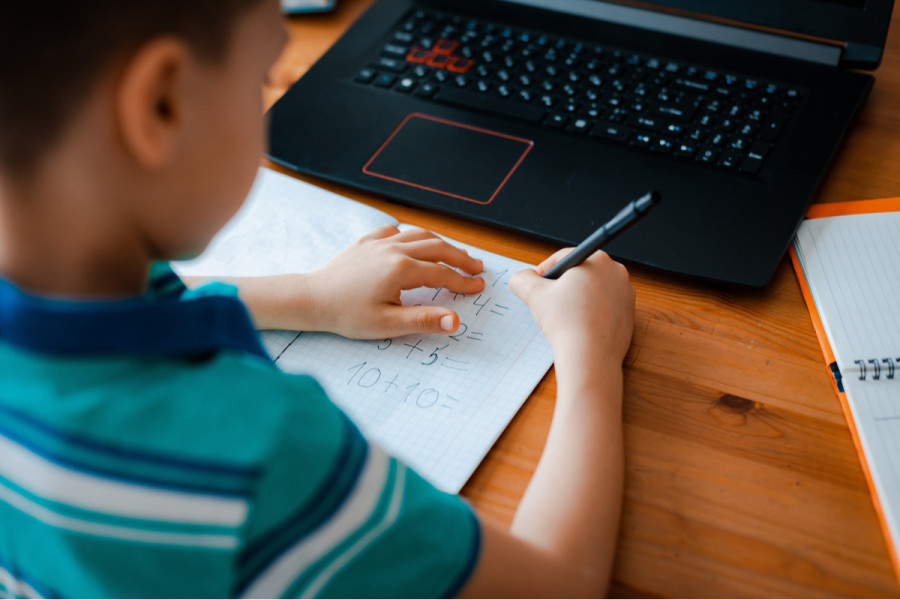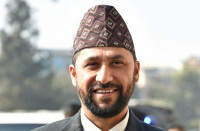National
School students’ achievement has plunged under virtual learning
Experts point to two reasons. First, most students don’t have access to virtual learning platforms. Second, teaching learning has not been effective.
Binod Ghimire
Bhuwan Ghimire, 45, has two of his children enrolled in a public school in Kathmandu. His daughter studies in grade six at Nandi Secondary School, Naxal, while the son is a 10th grader in the same school.
Prior to the pandemic, Ghimire was satisfied with the studies of his children. However, as the school shifted to online classes after physical classes were suspended to stem the spread of Covid, he feels their studies haven’t been effective.
“I don’t think my children are learning as envisioned in the curriculum,” he told the Post. “I am particularly unhappy with the performance of my daughter. Ineffective virtual learning is negatively impacting the performance of children in the lower grades who need more attention from teachers.”
He says the overall level of understanding of her children has dropped compared to two years ago. Schools across the country shifted to virtual learning platforms from March 2020 after the government enforced the first Covid lockdown. In the last two years, most of the teaching-learning has been conducted virtually.
The schools that had started in-person classes from October-November last year have again shifted to virtual classes after cases of a new highly contagious Omicron variant of the coronavirus spiked. Most of the schools across the country will not return to in-person classes until at least mid-February.
Various studies have suggested that most of the students in Nepal lack access to virtual learning and this form of learning is not effective even in places with good connectivity. A survey conducted by UNICEF in September among 6,643 children and guardians across the seven provinces showed that in the lack of virtual learning platforms, textbooks have been the only sources of information for 63 percent of children after the country went into a Covid lockdown in March 2020.
The number was higher among public school students with 70.5 percent of them relying solely on textbooks compared to 61 percent of private school students facing the problem. The report showed only 27 percent students had access to online classes—18 percent at community schools and 43.5 percent at private schools.
Education experts say the learning achievement of students has plunged for two reasons: first, most students do not have access to virtual learning platforms and second, teaching-learning has not been effective.
Tanka Nath Sharma, a professor at Kathmandu University, says it is worrying that students' learning achievement, which is already low, has further declined after their studies shifted online.
Several studies carried out by the Education Review Office, under the Ministry of Education, Science and Technology, before the pandemic show that on average school students learn just half of what has been envisioned by the curriculum.
Dilli Ram Luitel, spokesperson for the Centre for Education and Human Resource Development, agrees that there has been a decline in the learning achievement because virtual classes haven’t been as effective as in-person ones.
However, there hasn’t been a study to say to what extent it has been ineffective, Luitel says. “There is a need for a proper study to find out the degradation in learning during the pandemic,” he told the Post. “However, there is no immediate plan for such a study.”
An assessment by the World Bank says by the end of 2021 school days lost were above 200 and this is more than a school year. This prolonged interruption in learning could have grave and lasting effects, particularly in the middle income and poor countries, the assessment says. In some of such countries, the students had learned 27 percent less than what they would have learned in normal times.
“When the fallout of the coronavirus is finally tallied, it will become clear that its biggest damage is the lost learning of school-goers,” the study states.
Principals and school operators agree that the loss of learning among students is immense. Gita Kafle, principal at Nandi School, says the learning achievement of students has gone down because virtual learning has not been effective.
“Unreliable internet and electricity supply, poor interaction and lack of support at the family level are the major factors for the decline in students’ achievement,” Kafle told the Post. “Let’s hope the pandemic doesn’t last [too] long.”
School operators say it is necessary to carry out nationwide assessment of learning achievement of students. “It is necessary to conduct a competency test of our students,” Ritu Raj Sapkota, chairperson of the National Private and Boarding Schools Association, Nepal, told the Post.
Unlike the examinations conducted at the school or at the national level that generally test the knowledge of the examinees, the learning achievement assessment also tests the aptitude of the students. The World Bank assessment shows more efforts are needed to finance the return to classroom-based teaching, and help public schools adopt teaching techniques that blend online and in-person learning and teach students at the level they need today after the months and years they have been denied an education.
The best option, according to educationists, is to measure the learning achievement of students and conduct remedial classes.
“Students will continue to perform poorly if the gap in their learning achievement is not bridged sooner,” Luitel, the professor, told the Post. “Teachers must conduct remedial classes for students once they return to school for in-person learning.”




 8.12°C Kathmandu
8.12°C Kathmandu













%20(1).jpg&w=300&height=200)

